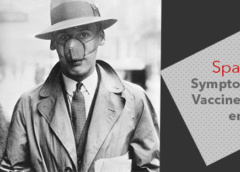Overview:
In the spring of 1918, Spanish flu was first detected in military personnel in the U.S. It has been dubbed the Spanish flu since it was believed to originate in Spain at the time. In reality, research published in 2005 indicates it originated in New York. In World War I (1914-1918) Spain was neutral that is why is named as Spanish flu, which meant it could report on the seriousness of the pandemic, but countries fighting the war censored details on how the epidemic affected their populations.
Although the world has faced several major pandemics over the last 100 years, one of the worst was the 1918 influenza pandemic, the so-called Spanish flu. The 1918 Spanish flu pandemic, the deadliest in history, which lasted for nearly 36 months from January 1918 to December 1920, was caused by a bird-born H1N1 virus. It has infected around 500 million people worldwide — about one-third of the world’s population — and killed an estimated 20 to 50 million victims, including some 675,000 Americans. The flu of 1918 was first detected in Europe, the USA and parts of Asia before spreading quickly across the world. There were no appropriate medications or vaccines at the time to combat this influx of killer flu. Citizens were forced to wear masks, classrooms, theatres and businesses were shut down and bodies stacked up in improvised morgues until their deadly global march ended with the virus.
In the span of five days, in a village with about 80 adult residents, 72 adults lost their lives to the infection.
Once government leaders understood the risk, cities took aggressive steps to try to stop the disease from spreading. Schools, theatres, and other public places of meeting were forced to close, and the U.S. government allocated an enormous amount to curb the spread.
What Caused the Spanish Flu?
This is unknown exactly where precisely the particular strain of influenza that caused the pandemic emerged; however, the flu of 1918 was first observed in Europe, America and Asia before spreading to virtually every other region of the world within a matter of months.
Despite the fact that the flu of 1918 was not localized from one region, it was known all over the world as the Spanish flu, since Spain was very affected by the disease and was not subject to the blackouts of wartime news that plagued other European countries. (Alfonso XIII, also king of Spain, allegedly contracted the flu.)
How many people infected and died?
A lot of people got very sick, very soon, in 1918. First cases of flu-like illness were reported in the United States in March of that year. More than 100 soldiers had become ill with flu at Camp Funston in Fort Riley Kansas. The number of flu cases quintupled within a week. Some people were reportedly dying within 24 hours or less. 1918 Flu disease often developed into organ failure and pneumonia, with pneumonia being the cause of death for the majority of those who died. Young adults were hard hit. The average age of those who died during this pandemic was 28.
At its worse, the Spanish flu infected 500 million people worldwide, which at the time was about a third of the Earth’s population. More than 50 million people died of the disease, with 675,000 in the U.S. There is some disagreement on that figure, with recent researchers suggesting it was about 17.4 million deaths, while others go as high as 100 million. Generally speaking, the fatality rate for the Spanish flu is calculated at about 2%.
Vaccine for Spanish flu
In 1918 there were no laboratory experiments to identify or classify such viruses because scientists had not yet identified flu viruses. There were actually no vaccines to help prevent Spanish flu. One explanation why Spanish flu was so deadly was that there were no antibiotics for treating secondary bacterial infections, so prevention measures across the globe were restricted to non-pharmaceutical responses such as isolation, quarantine, disinfectants, and restricting public gatherings, they were implemented erratically as they are now. In the 1940s, the first flu vaccine to be approved in the USA came into being.

Leave a Reply
You must be logged in to post a comment.